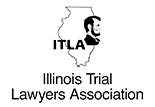
Placental Birth Injury Chicago Attorney Guide
A placental birth injury can be devastating. During pregnancy, the placenta, which begins to form as soon as an embryo is fertilized, quickly becomes the most important organ for the baby.
The placenta, which supports pregnancy-related hormones, controls uterine temperature and transfers both blood and oxygen to the baby via the umbilical cord, is attached to the uterine wall, and contains both maternal and fetal blood vessels.
It is, essentially, your baby’s life support system, and if problems occur, they can be life-threatening, because without blood – and the essential oxygen it carries – a baby will quickly lose brain cells, triggering lasting brain damage that could prove to be fatal.
In most cases, the placenta performs as it should, providing essential nourishment to the baby via the umbilical cord, but not all births are problem free, and in some cases, it is the vital placenta that puts the baby’s life at risk.
Contact a Chicago injury attorney to get help with a placental birth injury case.
What Impacts Placental Health?
Table of Contents
Various factors can affect the health of the placenta during pregnancy, including the age of the mother, since placental problems are more common for older women, high blood pressure, which can divert blood away from the placenta, diminishing its health, multiple pregnancies, previous uterine surgeries and premature rupture of the amniotic sac, which can disrupt the placenta.
There are several types of placenta problems that can be a serious risk factor for the baby.
Placental Abruption
Placental abruption is a dangerous condition that happens when the placenta detaches from the wall of the uterus, so it can no longer provide nutrients to the baby.
There are a variety of things that can contribute to placental abruption, including:
- Previous births that included placental complications.
- An older mother.
- A mother with high blood pressure, which diverts blood away from the placenta, potentially weakening the organ.
- Maternal infections.
- Smoking during pregnancy.
Women with risk factors of placental abruption should be carefully monitored because if the condition is left untreated, it can lead to a variety of fetal problems including cerebral palsy, cognitive problems and premature birth. It can also be fatal.
Placenta Previa
Placenta previa is rare – according to estimates it impacts just 1 percent of pregnancies – but the condition can be serious for both mother and baby.
It occurs when the placenta, usually located along the side of the uterus, moves toward the bottom of the uterus, either partially or fully blocking the cervix.
Because as the cervix dilates, it can disrupt the muscles of the uterus, the placenta can become detached from the uterine wall, cutting off the flow of nutrients to the baby and triggering maternal hemorrhaging. Hemorrhage is the leading cause of pregnancy-related deaths. (Ref. 1)
Potential health issues include:
- Asphyxia due to a lack of oxygen.
- Heart abnormalities and other birth defects.
Mothers with placenta previa are often put on bed rest in order to keep the placenta in place as long as possible, along with a mix of medications including vitamin K to reduce vaginal bleeding, a common placenta previa symptom, and steroid injects to strengthen an infant’s lungs in case the need for an emergency cesarean section occurs.
If placenta previa is properly diagnosed and the proper medical care is administered, there is no reason a pregnancy cannot end in the birth of a healthy baby.
Placental Insufficiency
Placental insufficiency occurs when the placenta does not develop properly, so it is unable to deliver not only the nutrients but also the oxygen an infant needs to be sustained throughout the nine months of pregnancy.
If not diagnosed early in the pregnancy and treated, this can lead to a variety of problems including premature birth, low birth weight and a lack of oxygen that can lead to neurological impairments, cerebral palsy, cognitive disabilities and a small birth weight.
The mother also faces certain health risks, including infection, hemorrhage or death.
Placenta Accreta
Placenta accrete is a serious condition that happens when the blood vessels that make up the placenta grow too deeply into the uterine wall, so the placenta isn’t able to become detached after delivery, which is traditionally what happens, and why the placenta is also known as the afterbirth.
The condition could lead to premature birth if it goes unnoticed, and if it is diagnosed, it can cause serious blood loss, and in most cases requires a cesarean section and a hysterectomy following birth. (Ref. 2)
There are also more serious forms of the placenta attaching itself abnormally to the uterine wall, including placenta increta, which is different from placenta accreta because the blood vessels penetrate the uterine walls more deeply, connecting to muscles, and placental percreta, which causes the placenta to grow through the wall of the uterus, sometimes impacting surrounding organs such as the bladder. (Ref. 3)
Because conditions associated with the placenta can be serious for both the mother and the baby, it is important for them to be diagnosed and treated quickly. If they are not, medical negligence can potentially lead to health problems for both.
If your baby experienced a birth injury associated with placenta issues, contacting an experienced birth injury attorney can help you learn what options you have if the injury was the result of medical negligence.
REFERENCES:
- https://journals.lww.com/greenjournal/Fulltext/1999/11000/Pregnancy_Related_Mortality_in_the_United_States.15.aspx
- https://www.mayoclinic.org/diseases-conditions/placenta-accreta/symptoms-causes/syc-20376431
- https://www.marchofdimes.org/complications/placental-accreta-increta-and-percreta.aspx











